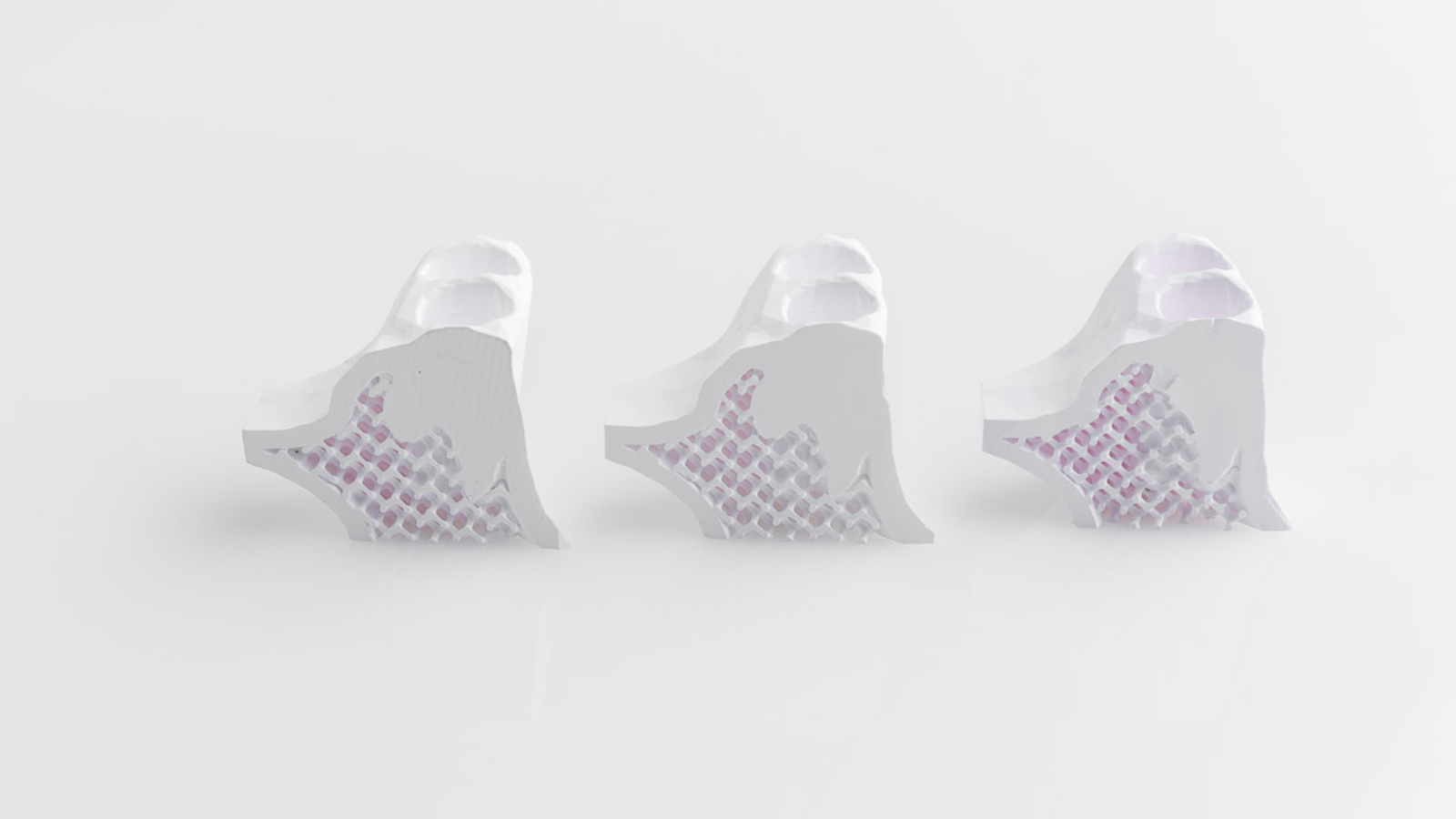3D printer manufacturer Admatec has announced that medical and dental professionals will now be able to use CAM Bioceramics’ medical-grade ceramic materials with Admaflex DLP 3D printing systems. CAM Bioceramics’ ISO 13485:2016 certification means its ceramics are medically approved, and this includes the now commercially available hydroxyapatite slurry 3D printing material. Admatec and CAM both believe that the combination of the biocompatible and bioresorbable ceramic with DLP 3D printing’s design freedom will prove to be a powerful tool for medical centers and device manufacturers alike.
Caspar Hogeboom, CEO of CAM Bioceramics, stated: “As a supplier for the orthopaedic and dental market, CAM Bioceramics acknowledges that 3D printing will play an increasingly significant role in numerous patient treatment plans. Calcium Phosphate based bone reconstructions will play an important part in this next generation of medical device solutions due to its proven biocompatibility. As one of the market leaders in this area, CAM Bioceramics actively partners with 3D print experts and promotes the evolution of 3D printed solutions.”

Biocompatible and bioresorbable ceramics
Recent developments in materials science have allowed the medical sector to make use of advanced ceramics for applications such as surgical instruments and long-term implants. In the case of biocompatible and bioresorbable materials, the body reabsorbs them over time and replaces them with native bone tissue. This completely eliminates the need for an additional procedure to remove the implant once healing is complete. According to Admatec, it takes a relatively long time for the body to absorb hydroxyapatite, giving patients plenty of time to heal.
Medical professionals can take this one step further with 3D scanning and produce patient-specific implants. Implant geometries can be optimized to fit perfectly with the bones of a patient. The structures within the implants can also be varied in terms of porosity and density to customize the rate of reabsorption by the body.
Admaflex DLP
Manufacturing on Demand
Admatec’s Admaflex technology is able to print features and wall thicknesses down to about 100 microns. Currently, the largest available build volume sits at 238 x 192 x 500mm, giving professionals the option between medium sized implants or a series of smaller implants in a single print. The company has also recently been focusing on multi-material DLP printing, with combinations such as hydroxyapatite and zirconia for lower jaw implants.
Giuseppe Cama, Head of Innovation & Science at CAM Bioceramics, adds: “Engineering know-how, flexibility and ease of use of the Admatec system have convinced CAM Bioceramics to collaborate with Admatec in this development thus enabling other medical device companies to take full advantage of this ‘turnkey’ solution. Customization to optimize patient outcomes can easily be achieved, supported by the physical proximity of the two companies.”

The field of 3D printed medical implants has been the focus of plenty of research in recent years. Just last month, researchers in Beijing 3D printed a personalized cervix tissue implant to counteract human papillomavirus (HPV). By loading the porous structure of the implant with an anti-HPV protein, the team was able to precisely control the release of the protein and inhibit HPV growth near the site of the cervix. Elsewhere, in Canada, researchers became the first to investigate the suitability of a titanium alloy, Ti-5553, for 3D printed bone implants. The results were promising, with the experimental alloy encouraging cell growth and extension at the site of the implant.
* This article is reprinted from 3D Printing Industry. If you are involved in infringement, please contact us to delete it.
Author: Kubi Sertoglu


Leave A Comment